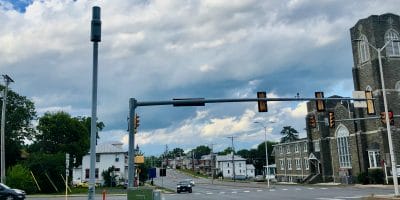A contributed perspective by Stephan J. Hess, CFP
Editor’s Note: This is another installment of a monthly series of contributed pieces addressing financial matters.
Housing in our community is booming right now, just like it was right before the Great Recession. In fact, the December report just came out and showed that values were up 10.4% nationally. Is this cause for alarm? Not necessarily. As of now, there does not appear to be a glut of low-quality loans infecting the marketplace, but that doesn’t mean you shouldn’t be wary. Everyone loves appreciating home values. Everyone except those who are trying to buy a home of course, and right now it’s a seller’s market for sure. Prices usually level out at a certain point based on demand and supply. When there is little to no movement in either, home prices are generally stable, but occasionally there is a disturbance in the force that causes this to change. Changing interest rates can do that, so let’s look at that and how it effects home values.
All around the world interest rates have been falling for quite some time. This is mostly a good thing because it makes the cost of borrowing money for a house cheaper. If you are looking to borrow $250,000 for 30 years, it will cost $1,413 at 5.5% and $1,119 at 3.5% (not including taxes and insurance). That is $294 less per month. The general rule of thumb is that you should keep your total mortgage payment below 28% of your pretax monthly income to stay in the “safe zone”. With falling rates, borrowers have the option of borrowing the original amount and benefitting from having a smaller payment or keeping the original payment and just borrowing more money.
Take a guess at what most people do. If you could afford to borrow $250,000 at 5.5%, and rates drop to 3.5% it means that the same monthly payment would allow you to borrow $315,000. Say hello to granite countertops and brick siding because we are now looking for $65,000 of upgrades. This is what happens in the short term as interest rates initially drop. What happens in the longer term is very different.
While the effects of mortgage rate adjustments occur in real time, home values can be much slower to respond. Remember that your realtor is going to look, in part, at comparable sales in your neighborhood to help determine a listing price for a home. The problem is that those values are based on previous home sales when rates may have been higher. With most houses now going under contract within 24 hours and occasional bidding wars, that should tell you something. This speaks to the lack of supply in our community, but it also means that home prices have not yet caught up with the wealth effect of lower interest rates. Those who act fast when rates initially drop are going to come out to the good. Over time, however, the market is going to adjust to find a new balance. Before you know it, the perfect home that you thought you could afford with the lower rates is going to be $65,000 more. Hmmm, now where did we see that number before. That’s right, the expanded purchasing power of lower rates dissipates as the price of housing increases by the same amount. Now you are essentially back at your original position. Rates are lower, the price of the home has increased, and your payment is back where it started. Home sellers would be well advised to consider both previous sales and current interest rates in determining a listing price. Otherwise, you could be unknowingly selling too low.
Now let’s look at what happens should the opposite occur where interest rates rise quickly. When this happens, those who previously could afford to borrow $315,000 at the lower rates can now only borrow $250,000 at the higher rates. Suddenly, the pool of capable buyers at the higher level has shrunk. Finding buyers might get harder, which means sellers may have to lower their listing prices to attract qualified buyers. The higher the increase in rates, the larger the drop you would expect, everything else being equal. Just like there is some lag time on the way up there is also some lag time on the way down. Buyers who are still caught up in the frenzy of cheap money may borrow big and buy high. Buyers would be well advised to watch interest rates as well in determining an appropriate offering price for a home when rates are rising.
Real estate tends to appreciate over time, but after a real estate bubble some people find themselves owing more than what the home is worth or ending up with a monthly payment well above the 28% safe zone. That happened to many people who bought between 2006-08. Most of the time, interest rates drift slowly up or down and there is nothing to get excited about. When rates move further and more quickly then its something for both buyers and seller to consider. Life happens, be ready.
Stephan J. Hess, CFP®, is a CERTIFIED FINANCIAL PLANNER Professional and is the owner of Hess Financial in Harrisonburg. Neither he nor his company has any financial relationship with The Citizen or its publishers.












